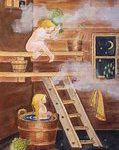Last Updated on 1 year by Francis
Positive and negative ions are two types of charged particles that exist in nature. While positive ions have a net electrical charge that is positive, negative ions have a net electrical charge that is negative. These ions can be found everywhere, from the air we breathe to the water we drink. Understanding the properties and behavior of Positive and negative ions is important in many fields, including chemistry, physics, and biology. In this context, we will explore what Positive and negative ions are, how they are formed, and their significance in our day-to-day lives.
Contents
The Science behind Positive and Negative Ions
Ions are atoms or molecules that carry an electric charge due to the loss or gain of one or more electrons. Positive ions have an excess of protons and negative ions have an excess of electrons. The air we breathe is made up of numerous molecules, and some of these molecules are ionized. The balance between Positive and negative ions in the air can have a significant impact on our health and well-being.
The Benefits of Negative Ions
Negative ions are found in nature in abundance, especially in places like waterfalls, forests, and beaches. When we breathe in negative ions, they interact with our body in various ways. Negative ions are believed to increase the levels of serotonin in the brain, which can help regulate mood, reduce stress, and improve focus. Negative ions can also help boost the immune system, increase oxygen levels in the blood, and reduce inflammation.
The Dangers of Positive Ions
In contrast to negative ions, positive ions can be harmful to our health. Positive ions are found in abundance in polluted air and indoor environments with electronic devices. Positive ions can cause headaches, fatigue, respiratory problems, and other health issues. High levels of positive ions can also disrupt our sleep patterns and make us more susceptible to illnesses.
The Effects of Positive and Negative Ions on the Body
Negative Ions and Mental Health
Numerous studies have shown that negative ions have a positive impact on mental health. Negative ions have been found to reduce symptoms of depression, anxiety, and seasonal affective disorder (SAD). Negative ions have also been shown to improve cognitive performance, increase concentration, and reduce stress levels.
Positive Ions and Physical Health
Positive ions have been linked to a range of physical health issues. High levels of positive ions can cause respiratory problems, trigger allergies, and exacerbate asthma symptoms. Positive ions have also been linked to headaches, fatigue, insomnia, and other sleep disorders.
How to Increase Negative Ions in the Environment
Spend Time in Nature
Spending time in nature is one of the best ways to increase your exposure to negative ions. Walking in the woods, hiking near a waterfall, or spending time at the beach can all help increase negative ion levels in the body.
Use Negative Ion Generators
Negative ion generators are devices that release negative ions into the air. These devices can be used in homes, offices, and other indoor environments to help reduce the number of positive ions in the air. Negative ion generators can help improve air quality and reduce the risk of respiratory problems, fatigue, and other health issues.
Invest in Houseplants
Houseplants are a natural way to increase negative ion levels in the home. Plants absorb carbon dioxide, release oxygen, and increase humidity levels, which can all help create a healthier indoor environment.
FAQs for Positive and Negative Ions Will
What are positive and negative ions?
Positive and negative ions are atoms or molecules that have gained or lost electrons, resulting in an unequal number of protons and electrons. Positive ions have lost one or more electrons, leaving them with a net positive charge, while negative ions have gained one or more electrons, resulting in a net negative charge.
What are the effects of positive ions on the body?
Positive ions can have detrimental effects on the body. They are commonly produced by electronic devices, pollutants in the air, and other sources. When breathed in, positive ions can increase irritability, anxiety, and stress levels. They can also exacerbate respiratory problems and worsen symptoms of allergies or asthma.
What are negative ions and their benefits?
Negative ions are found in nature, especially near large bodies of water, in forests, and in areas with plenty of sunlight. Negative ions have a relaxing and calming effect on the body, reducing stress levels, promoting mental clarity, and boosting the immune system by enhancing the body’s natural defenses. Negative ions are also believed to aid in better sleep, reducing headaches and migraines, and improving air quality.
How can I increase the levels of negative ions in my home?
There are several ways to increase the levels of negative ions in your home naturally. One way is to open windows and doors to allow fresh air to circulate. Another way is to bring indoor plants into your home or to use a Himalayan salt lamp as both release negative ions. Installing a home air ionizer can also be beneficial, as it can attract positive ions and neutralize them. Additionally, getting out in nature and spending time near waterfalls, beaches or forests can expose you to higher levels of negative ions.
Can positive and negative ions affect building materials?
Yes, Positive and negative ions can affect building materials. Positive ions have a stronger electrostatic force than negative ions and can cause materials such as concrete or metal to corrode or rust. Additionally, positive ions can cause the paint to peel off surfaces or create a buildup of static electricity, which could lead to electrical shock. On the other hand, negative ions can have a beneficial effect on the environment by removing harmful pollutants from the air, reducing the need for harsh chemicals or cleaning agents, and preventing mold growth.







